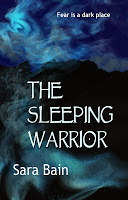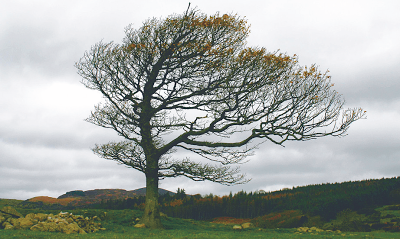Sara Bain's Blog, page 3
September 23, 2013
Genre Benders: A speculative approach to fiction

THERE was a time when all ‘genre’ fiction was regarded with haughty disdain by librarians and publishers of quality, realistic literary works. As more people learned to read, however, access to books was no longer the privilege of scholarly bureaucrats and popular fiction was born.
In order to feed the voracious appetites of patrons and readers respectively, more novels were commissioned and written in a wide variety of subjects, themes, structures and functions. This led to the classification of popular fiction into subject matter or ‘genre’ as we know it.
Publishers rely on strict classification for promotion and marketing. Bookshops require that each new work of fiction is labelled with a ‘genre’ in order to maximise readership and revenue. By placing a book on the right section of the right shelf eases access to buyers’ preferences, thereby increasing sales. Libraries need a classification system by which to help their patrons choose what they want to read.
This has been the traditional way of the fiction market for a very long time and authors whose works crossed those fixed genres had a high chance of being turned down by publishers for the sole reason of failing to belong on a shelf.
Only a few years ago, most speculative, or cross-genre, fiction was sniffed at by many publishers who couldn’t see past their profit and loss accounts to take the risk of baffling bookshops and libraries with works they could not label. A similar treatment was given to erotica which was deemed only to be read by dirty old men in raincoats.
The very word ‘speculative’ denotes conjecture, chance, theory over practicality and a high risk of loss, suggesting that whoever dreamed up that category had a very cynical view of crossing stereotypical classifications. That said, there have been some very successful novels written in this sub-genre of general fiction but they are few in comparison to other more traditional genres.
Speculative fiction, as a concept, has been around for millennia. It was written by the great Greek dramatists and by Shakespeare long before Robert Henlein wrote Life-Line. In fact, every work of fiction can be said to contain a speculative element, no matter how subtle. It is only since the ’40s that the term has been further stretched and distorted to include an element of fantasy, sci-fi, horror or paranormal in the narrative.
The coming of the mighty Amazon, has opened the minds of publishers as well as the locks to their submission gates to speculative fiction as reader trends have demonstrated a hearty appetite for the genre. As superheroes, vampire-slayers and boy wizards wage war against evil in contemporary or dystopian societies - and also on far-off planets - on television, cinema, computer and hand-held screens, spec-fic novels are being gobbled up by new fans and are even appealing to younger readers who would otherwise say that books are for bores and losers.
E-pub websites have revolutionised the publishing business in that readers are now choosing what they want to read as opposed to publishers telling them what they should. The effect has been brutal on the established publishing houses who are all reeling in the wake of the e-book explosion and the movement away from the traditional business model. Without the watchdog of a publisher, however, the absence of quality in many self-published books is a serious cause for concern as is the saturation of the market by thousands of new books being published every day that is giving readers too much choice.
For authors, the likes of Amazon, Smashwords and FeedARead have granted them that freedom of expression that traditional publishing houses have denied them. Now anyone can be an author. Amazon et al have no limitations to their lists, no selection process and no submission constraints. They don’t discriminate on quantity or even quality but instead allow readers to enforce the rules.
Whether this is good or bad is a completely different subject for debate, suffice it to say that now every book has a chance to be read and speculative fiction in all its many guises has an undeniable position on the shelves of quality literature.
Published on September 23, 2013 14:11
September 9, 2013
Author interviews
TRYING to keep up to date with the social networking platforms is exhausting but often the results are very satisfying.
While I'm busy promoting my own book, over at Ivy Moon Press I've interviewed three quality authors and would really like others to take a good look at their work.
Bill Kirton, Mary Smith and Michael Brookes are a diverse trio of talented writers who I've brought together in my publishers' blog in the hope that my small efforts may get them noticed by a few more readers.
Take a look and see for yourself: http://ivymoonpress.wordpress.com/
While I'm busy promoting my own book, over at Ivy Moon Press I've interviewed three quality authors and would really like others to take a good look at their work.
Bill Kirton, Mary Smith and Michael Brookes are a diverse trio of talented writers who I've brought together in my publishers' blog in the hope that my small efforts may get them noticed by a few more readers.
Take a look and see for yourself: http://ivymoonpress.wordpress.com/
Published on September 09, 2013 14:27
September 7, 2013
Writing, designing, editing and selling: The journey of a new book

MANY people believe that writing a book ends with the words THE END. How wrong can they be?
I'm in half a mind to update those last two words of my debut novel, The Sleeping Warrior, to read IT BEGINS because writing the book is only a fraction of the time and effort it takes to bring a new work to the attention of the world's readers.
I decided not to go with a publisher. I think I've got the experience and skills to go it alone, so started up a small press where the first book on its lists is written, published and promoted by me.
Publishing is not as straightforward a business as people think. From the initial editing process to design, through to making the work available on all reading formats, is a long and often frustrating task.
No matter how many times you proof your own work, there is always something to change. Even after having The Sleeping Warrior proofed by two very excellent editors, who I trust to be pedantic and subjective, I still found some little bits and pieces that needed amendment.
The trouble is, there is no such thing as perfection in the world of publishing any more. Too often, I open a traditionally published book and find glaring typos on the pages. Cuts to staff and the freelance budgets as well as department restructures across the publishing industry have taken a large toll on quality, even amongst the publishing giants.
In addition, I've heard that marketing budgets are minimal so publishers like their authors to be 'pro-active' in the promotion of their own works. Roughly translated, this means that authors (unless the name is a marketable commodity in itself) must develop a presence on the internet by social networking; find outlets for reviews and interviews by undertaking their own press work; get themselves a spot on the literary calendars by finding hosts for book launches, talks and presences at book events; and generally sell their souls to anyone they know who is able to help them spread the word.
If authors are being forced to become their own press officers and advertisement managers, then why give away the royalties to a business that's not prepared to invest in you?
Apart from said time and effort, it costs nothing to put a book up on the likes of Amazon, Smashwords and FeedARead etc. It costs nothing to set up a print on demand service and have paperback copies made available across the world and it costs nothing to make the book available to the big bookshops and worldwide distributors.
Initial outlay costs are low. Anyone serious about self-publishing who want to keep complete control over sale of their books will need an ISBN which can only be bought in blocks of ten for about £128: these are cheaper if bought in bulk, as the larger publishing houses do. Otherwise, for the self-published author who just wants to get their book out there, Amazon et al will provide a free ISBN but also reserve the right to publish a particular version exclusively.
Investing cash in a good editor is vital as is finding a good cover design. Most authors are not graphic designers but most authors also have an inkling as to what they want their cover to look like: one that's eye-catching and tells the story, or at least part of it. I'm lucky to be an able graphic designer and so can keep full control over what I want the end product to look like.
I've developed a good following on Twitter and am working on my Goodreads and Facebook profiles while trying to get the websites up and running.
The eBook version is out but I've had a few problems with CreateSpace which have delayed the proofs so the paperbacks won't be available until the end of the month (or when I get to see the proofs, whichever is the soonest).
I need to do a few booklaunches and send out a few press releases but need the paperback copies before I can set these particular wheels in motion. In consequence, I am organising a small print run with my local printers.
Trouble is, I'm so busy blogging and networking, that the author part of me has become lost.
Why be an author if no one reads your book. It's a bit of a chicken and egg situation at the moment, but I'll get there.
Published on September 07, 2013 07:18
September 2, 2013
Moving home
I am moving.
I've written and published my very first book and I am very proud of myself.
I've built a new website on Wix as a temporary measure until I get the chance to build one properly.
You can find me at www.spbain.wix.com/sarabain
You can also follow my publishing journey on www.ivymoonpress.wordpress.com or visit my publishers' website at: www.ivymoon-press.co.uk (once it's built, that is).
See you there.
I've written and published my very first book and I am very proud of myself.
I've built a new website on Wix as a temporary measure until I get the chance to build one properly.
You can find me at www.spbain.wix.com/sarabain
You can also follow my publishing journey on www.ivymoonpress.wordpress.com or visit my publishers' website at: www.ivymoon-press.co.uk (once it's built, that is).
See you there.
Published on September 02, 2013 16:54
July 1, 2013
The horrid sinne of Witchcraft
 'Thou shalt not suffer a witch to live’ says the Bible (Exodus 22:18) and two hundred years of witch hunters ensured that The Word was spread. In Scotland thousands of men and women stood accused before their Kirk Sessions for the 'horrid sinne of witchcraft' and, just over three hundred years ago, Dumfries and Galloway saw the very last witch trial in the United Kingdom.
'Thou shalt not suffer a witch to live’ says the Bible (Exodus 22:18) and two hundred years of witch hunters ensured that The Word was spread. In Scotland thousands of men and women stood accused before their Kirk Sessions for the 'horrid sinne of witchcraft' and, just over three hundred years ago, Dumfries and Galloway saw the very last witch trial in the United Kingdom.AGNES Commes, Janet McGowane, Jean Tomson, Margaret Clerk, Janet McKendrig, Agnes Clerk, Janet Corsane, Helen Moor head and Janet Callon — the names as they would appear today could all belong to the members of a local rural.These unrelated women with the unremarkable titles, however, suffered the same brutal fate in 1659 — they were strangled and burned at the stake on Dumfries Whitesands for ‘the horrid sinne of witchcraft.’For over a two-hundred year period, political and religious conviction was responsible for the torture and death of many innocent people across Europe.In Scotland, during the time of the witch trials, 3,867 formal accusations of witchcraft were made.Of those, roughly half of the defendants were executed. In this region 128 of those cases came before our Kirk Sessions.In 1514, the Steward of Kirkudbright was commissioned to apprehend and try named subjects who were suspected of witchcraft.In 1563 the newly established Church of Scotland made it illegal to be a witch or to consult a witch. An Act of Parliament followed that year making the crime a capital offence.The coming of James VI marked a very dark and terrifying time for all who lived on the fringes of society.His treatise entitled ‘Daemonology’ in 1597 passionately denounced the practice of witchcraft and instigated a brutal rampage of slaughter that would last for the remainder of his reign.Later, the General Assembly continued this work by passing a decade of Condemnatory Acts against witches in the 1640s.The third peak began in Galloway when nine women were strangled and burned on the Whitesands in 1695.More and more witch finders came forward, demanding their fees for rounding up suspects and torturing confessions from them.All methods of inhumanity were utilised to extract a statement of guilt. Witch hunters were also known to torture the suspect’s family in front of them in an effort to exchange confession for coin.Those found with a ‘witch mark’ would be pricked with 3’ needles through the spot. If the accused cried out in pain, he or she would be deemed innocent of the ‘sinne’. If nothing was felt or it did not bleed, she would certainly be a witch.Throughout Europe men and (mainly) women were either brandished, banished, jailed or burned for their allegedly evil deeds.Galloway boasts the last recorded witch burning in Scotland, taking place in 1698 when Elspeth MacEwen was found guilty of, amongst other things, ‘a compact and correspondence with the devil.’The last witchcraft trial in the United Kingdom took place in Dumfries in 1708 when Elspeth Rule was branded on her cheek with a hot iron and banished from Scotland.Dr Lizanne Henderson, lecturer in History at Glasgow University’s Crichton Campus, Dumfries, is an authority on European folklore and Scottish history.She said: ‘Scotland was later in persecuting witches than England, Germany, France, etc, but not by much. Other European countries, such as Hungary, were still persecuting witches well into the 18th century.‘The Kirk in this part of Scotland very rarely employed witch finders. There were, however, some individual ministers who were reluctant to give up belief in witches as they thought it was linked to atheism and an erosion of Christian belief and values.’But who were these enemies of God and king?Dr Henderson explained that there was no evidence to suggest that witches actually performed the feats they were accused of.‘The average person accused of witchcraft generally would have been mainly female — males made up about 15 per cent of cases,’ she said.‘This was no an attack on a particular gender nor was it founded upon superstition. Witchcraft was part of the belief system at the time and very real to everyone. When bad things happened — like a cow would stopmilking, a hen refused to lay, crops failed or milk curdled in the churn — the victim would look for a logical explanation for his misfortunes.‘The practice of witchcraft was a logical explanation at the time and the remedy would be to find the person who was causing it.’Midwives, people with squints, herbalists, those with deformities and those living on society's social margins were all deemed suspects.Many of the victims were elderly women who relied on the local landowner or farmer for charitable donations of food to maintain a meagre existence.In Lanarkshire in 1612, Alison Devise was sentenced to public execution for practising witchcraft. She was 11 years old.‘What people were fighting against was "the witch", Dr Henderson explained, ‘and people would look for the most likely suspect.‘This was normally an older person who was perhaps unpopular in the village; or particularly ill-tempered; or had behaved in a certain way over a period of time that would give him or her a bad reputation amongst the villagers.’It was this reputation, built up over the years, that would brand them as suspicious. But it was the establishment of the day that would eventually condemn them.‘The legal system and the clergy were not concerned with the actual result of the alleged witchcraft. They were more interested in how the witch was performing her feats and put this down to a relationship with the devil.‘Witches were accused of denouncing their Christianity and entering into a pact with the devil. This was a far more serious crime and one that imposed most severe penalties.’The Witchcraft Act was repealed in 1736.‘After this date it was no longer possible to legally prosecute someone for the crime of witchcraft,’ said Dr Henderson, ‘though you could still prosecute for 'pretended witchcraft' which actually happened to Jean Maxwell from Kirkcudbright in 1805. She was sent to prison for one year.’Today, it is difficult to believe that eminent members of the church and state could actually entertain the notion that a human being could turn into a beetle, speak with the devil or cause lameness in a horse by just looking at it, let alone fly across oceans on a broomstick.Some of these individuals could indeed have practised witchcraft as we know it today, but most of them were simply innocent victims of their time.In a modern society where human rights and individual liberty are sacrosanct, certain factions of the pagan religion are now safe to call themselves ‘witches’ without fear of a painful combustion, yet the stigma remains and our need for the existence of the anti-hero feeds it.Five hundred years on we carry the same perception of ‘the witch’ as people did then — only we no longer kill them.Instead many of us erroneously acknowledge their existence with a certain amount of trepidation and sometimes even ridicule.It takes a very courageous individual to admit to being a witch. The link with Satanism and black magic certainly makes for a bad public image, but the majority of witches are gentle environmentalists and the colour of their magic is normally white and often very green.
Published on July 01, 2013 12:04
June 28, 2013
Return to Rerrick
 A LONELY tree stands twisted and
A LONELY tree stands twisted andsilent on a hill near Auchencairn.
It has a beautiful panoramic vista which includes the Solway and the mountains of Cumbria.
It is apparently the last of a line of trees that were planted on the site of the former Ringcroft of Stocking a few hundred years ago.
They have come to be known as “The Ghost Trees” and were put there either to contain evil spirits or to remind the living world that there are many more realms to this existence.
Some locals believe that, when the last of the ghost trees dies, the evil spirit that haunted a farmer and his family over three hundred years ago will return.
The Rerrick Parish Poltergeist is a chilling tale and one of the most well-documented
events of its kind.
In 1695 a farmer and his family were subjected to three months of violent paranormal activity in and around their farmhouse in the parish of Rerrick.
Five priests performed an exorcising ritual for two weeks, but the angry spirit only got worse.
In the end, it suddenly left of its own volition and, so far, has not been back.
There are a number of houses close to the site and one of them in particular is purported to be haunted.
An Auchencairn man and his teenage daughter, both of whom prefer not to be named, lived in a small cottage possibly built on the ancient boundaries of the steading.
The man told of strange occurrences in the house while he was living there a few years ago.
“We used to find teaspoons in the hearth in the mornings,” he said.
“I don't know why something should want to put these objects among the ashes but we got so used to it that it didn't really bother us.
“One day my daughter was walking out of the kitchen and heard a loud crash behind her.
“A pan had apparently fallen off the shelf and landed on the floor by her feet.
“There is nothing particularly unusual about something falling off a shelf, only that particular pan must have travelled about five feet through the air and across the kitchen.
It could only have been thrown.
“One morning I was in the kitchen and the kettle switched itself on.
“I tried switching that kettle on and off a hundred times afterwards to see whether it was possible for it to come on by itself.
“The button actually takes quite a bit of pressure to switch it on, so I put that down to the
ghost.”
There were also strange knocks on the door and something twanged the guitar strings on more than one occasion.
The man, who still lives close to Auchencairn, was also told by an elderly local that he was one of the longest serving tenants in that house.
People often came and then left quite swiftly after.
“There were strange things going on in the house, but I never once felt frightened or apprehensive about living there" the man said.
"Whatever it was, didn't particularly bother me.”
The Ringcroft of Stocking did have a reputation for being haunted before the MacKie incident and it appears that perhaps it still is.
Hopefully though, whatever it was that subjected Andrew Mackie and his family to three months of torment and horror over three hundred years ago will never return in our lifetimes.
Let’s hope so.
Published on June 28, 2013 18:29
The Rerrick Poltergeist
 THE GHOST TREE: Pictured is the twisted oak that stands in a field just outside the village of Auchencairn. It is the last tree to remain on the site of the Ringcroft of Stocking where one of the most bizarre and violent hauntings ever to have been recorded took place. Local lore says that, when the last of the ghost trees dies, the Rerrick poltergeist will return.
THE GHOST TREE: Pictured is the twisted oak that stands in a field just outside the village of Auchencairn. It is the last tree to remain on the site of the Ringcroft of Stocking where one of the most bizarre and violent hauntings ever to have been recorded took place. Local lore says that, when the last of the ghost trees dies, the Rerrick poltergeist will return.IT seems strange that, despite thousands of years of perfecting our native speech, we have to rely upon our European neighbours to accurately describe a symptom of paranormal phenomenon.
The word “poltergeist” derives from the German “poltern” to make a racket, and, of course,“Geist” which could only mean ghost.There is no alternative translation in the English (and Scots) language.
Perhaps this is why this exotic word strikes fear and apprehension in the unsuspecting.
How can the dead touch the living world and, moreover, what harm can it do?
The supernatural remains unproblematic and simple, provided it keeps itself to itself. When it poses a danger or a threat to the living, however, it is time to worry.
In 1695 a real event happened to real people in the parish of Rerrick (now Auchencairn.On a windswept hill on the outskirts of Auchencairn lies the site of the Ringcroft of Stocking.
This was once the home of farmer Andrew Mackie and his family.
Apart from a singular tree that stands in a forlorn field, there is little else to mark the existence of one of the most bizarre and violent chapters in the paranormal history of Dumfries and Galloway and probably the world.
The events have been well documented, even in the Encyclopaedia Britannica, and someone has yet to come forward and dispute the written testimony of a learned priest at the time and 14 eminent members of the community who bore witness to the strange happenings on the Mackie steading.
One morning in February 1695, farmer Mackie woke up to find his cattle had been set loose from the byre and their ropes had been cut. He thought it strange and remained vigilant.
The property had apparently had a bit of a reputation for being haunted, but nothing could have prepared farmer Mackie and his family for the supernatural onslaught that befell them over the next few months.
The cattle roamed free the following night, only this time a cow had been tethered to a high beam in a shed, so much so that the animal's feet could not touch the ground. No man could have performed such a feat and Mackie's anxiety grew.Soon stones were being hurled at the family and, despite the many efforts to detect their origins, there was no explanation for the vicious assaults.
Household items went missing, only to turn up later in ridiculous places; children were spanked by unseen hands in the middle of the night and strange fires were kindled inside the byres and the farmhouse.
The house was set alight as were sheep and stables.Visitors were cruelly beaten by stones and staves and the unseen entity was purported to: “drag people about the house by their clothes.”
One account stated: “A blacksmith narrowly escaped death when a trough and plowshare were hurled at him. Small buildings on the property spontaneously burst into flames and burned to cinders. During a family prayer meeting, chunks of flaming peat pelted them.A human shape, seemingly made out of cloth, appeared, groaning: 'Whisht... whisht'.”Strangely enough, although battered and bleeding, no-one was badly hurt.Numerous searches of the grounds and night-time vigils came up with no explanation for the strange occurrences.
And so the fame of the Mackie Poltergeist, as it became known, grew wider.There were many efforts to bless and exorcise the seemingly impromptu and malevolent spirit but they were all beaten off with flying stones or clods of earth.
The family and neighbours became so perturbed that they enlisted the aid of the local clergyman, one Reverend Alexander Telfair, whose account was supported by 14 upstanding members of the Scottish community, each of whom personally bore witness to the poltergeist manifestation.
Telfair recorded that the entity: “threw stones and divers other things at me, and beat me several times on the Shoulders and Sides with a great Staff, so that those who were present heard the noise of the Blows.”
It was Mrs MacKie who found a small pile of bones underneath a loose stone at her threshold. They were wrapped in flesh.Witchcraft and murder were suspected.On April 8 a magistrate in the area came up with an idea.
He appealed to the laird of Colline to find every living person who had lived in the house to be examined and made to touch the bones — believing that the guilty person would have an effect on the earthly remains of his victim.
Nothing happened, however, and five local ministers performed an exorcism the following day.On April 9, the ministers began the exorcism of the Ringcroft of Stocking, but this proved an almost hopeless task.
A few of them, including Telfair, claimed that “something had grabbed them by the legs or feet and lifted them into the air.”
The ritual turned into a nightmare as they prayed for deliverance under a hail of flying missiles. The house was said to shake and a huge hole was ripped in the roof. The exorcism took two gruelling weeks.
On Friday, April 26, the evil spirit spoke. With a few furious oaths and a number of hair-raising curses, it told them it would take them all to hell and then said: “Thou shalt be troubled 'til Tuesday.”
As if by magic, on the Tuesday of May 1, 1695, a dark cloud roiled in the corner of Mackie's barn. Many witnessed the strange manifestation and watched it grow and blacken.
As it filled the building, great clods of mud flew outwards and spattered the faces of the horrified witnesses.
Some were gripped with vice-like fingers but this last violent event marked the exit of the Rerrick Parish Poltergeist from the world of men.
For reasons best left to God or coincidence, it took its leave of Rerrick and the Mackies, never to be seen or heard again.
Published on June 28, 2013 18:11
Strange but true?
 A FEW years ago, when I worked as a journalist for a regional newspaper, I wrote a series of articles on haunted places in Dumfries and Galloway. The research was intriguing, compelling and altogether fascinating. This is one of those strange-but-true stories that I will never forget. It is a tale that is very much believed by a family who truly feel that they are haunted by their past. The picture was taken by the very talented Jim McEwan who, no doubt, was forced to trudge through the undergrowth at my behest.
A FEW years ago, when I worked as a journalist for a regional newspaper, I wrote a series of articles on haunted places in Dumfries and Galloway. The research was intriguing, compelling and altogether fascinating. This is one of those strange-but-true stories that I will never forget. It is a tale that is very much believed by a family who truly feel that they are haunted by their past. The picture was taken by the very talented Jim McEwan who, no doubt, was forced to trudge through the undergrowth at my behest.CENTURIES of history in Dumfries and Galloway have not passed without their fair share of blood-letting and horror.With soil, coin and title affording ultimate power, the people of these lands have witnessed terrible atrocities in the names of renown and revenge.It is surprising, therefore, to come across a tale that is so gruesome and horrific, that it is barely believable, but it is one born out of accident rather than malicious intent.The incident has been well documented in official records and most members of the Jardine clan have at least heard whispers of the terrible fate that befell one James Porteous some time in the 1650s.It was around this time that Sir Alexander Jardine ruled Applegirth from his stronghold known as Spedlins Tower, near Lockerbie.A miller called James Porteous was accused of burning down his mill and was confined to a prison in the tower.“He was kept inside what is called a bottle-neck dungeon,” Sir Alec, head of today’s Jardine said. “This dungeon was approximately 10 feet deep with a base of six foot in circumference. The neck was only two feet across. Porteous was thrown into it and the door was locked above his head.”All was well until Sir Alexander was called to a sudden and unexpected meeting in Edinburgh. He set off as usual on his lengthy journey that may have taken him four or five days.It was not until he was passing through the gates of the city that he noticed he was carrying the gate keeper’s large bundle of keys.To his horror, Sir Alexander realised that he had taken with him the only key to the sturdy door that the hapless Porteous had been confined beneath.Meanwhile, at Spedlins Tower, the poor miller screamed out against his terrible suffering: “Let me oot! Let me oot! I’m starving! Give me food and water! Let me oot!”But his pitiful pleas were to no avail, for there was no key to the heavy door and the jail had become a tomb.Despite Sir Alexander’s attempts to send a man back swiftly to relieve the prisoner of his agony, he was too late in his efforts.The servant found the sorry Porteous in the dungeon dead. In desperation, the miller — insane with the horror of his ordeal — had gnawed off his own hands.It was not long before the ghost of Porteous moved in to Spedlins Tower and all hell broke loose.The angry spirit, who became known as “Dunty” (or “one who knocks”), screamed his complaints across the halls and stairwells of the tower.One account says that he “rattled chains, banged on doors and moaned incessantly”, making life obviously unbearable for its terrified owners.Unable to endure any more of Dunty’s shrieking, Sir Alexander sought the help of the family chaplain who performed an exorcism of the restless spirit using the castle’s bible.Dunty’s ghost finally quietened and confined itself to the dungeon — the place where he had suffered his cruel fate.The Jardine family could sleep again.It is said that it was not too long after that the chaplain dropped dead from a sudden and inexplicable illness.Some years later, the bible showed signs of wear and was sent away to be rebound.Dunty’s ghost appeared to take advantage of this and became “extremely boisterous in the pit.” It banged on the door so violently that it almost shook off its hinges. It continued the pitiful cries and generally made a nuisance of itself.Even an attempt to flee to nearby Jardine Hall did not deter the obdurate Dunty from making his presence felt.“My ancestors believed that a ghost could not cross water and the River Annan lies between the tower and the hall,” explained Sir Alec. “This was proved wrong and Dunty chased the family across the river, even dragging the lord and lady out of bed.”The Jardines had the bible returned from its binders forthwith and it was placed in the dungeon wall where it remained until the family moved from the tower.It is believed that the vengeful ghost of James Porteous left the tower with the Jardines and continued to haunt the Lairds of Applegirth down through the centuries.Spedlins Tower fell to ruin and has recently been impressively restored by the Grays who are the present owner-occupiers.Do they ever hear the screams of Dunty?Mr Gray does not believe in ghosts.For Sir Alec, heir to the Applegirth name, title, lands, history and ghost, it is a very different matter.“I have no idea if Dunty still haunts Spedlin because I have the family bible,” he said.“It was beautifully rebound and lies safely in an oak case. I don’t know whether it is this that keeps Dunty quiet, but I do not relish the prospect of losing it and finding out!”Amazingly, Sir Alec also holds the key to the dungeon that he keeps in a safe place and has his own theory of this regrettable chapter in his family’s history.“There is a school of thought that Porteous was the laird’s secret half-brother and that there was a bit of skulduggery going on,” said Sir Alec.“The Laird of Applegirth was said to have a deformed foot, while Porteous was a big, muscular man. It is possible that there was a lot of rivalry between the two of them and a fair amount of jealousy. I think that there was more to Porteous’ death than has been told.“A few years ago, I planted an oak tree at Spedlin in the memory of James Porteous in the hope of making peace with him. Ijust felt that it was the right thing to do.”The Jardines have gone from Spedlin. Their once magnificent hall across the river has disappeared without trace and, if there still remains a dark echo of Dunty, no-one is telling.
If the ghost of James Porteous has found forgiveness at last, then perhaps it is time to let him rest — he certainly deserves it.
Published on June 28, 2013 17:47
May 6, 2013
Onwards and upwards
 Blogging, like my life at the moment, is a bit sporadic and driven by impulse.That's not too much of a bad thing though.I have now finished my first novel, a contemporary fantasy set in London and Scotland called The Sleeping Warrior, and have sent it off to a publisher on a wing and a prayer.I also suddenly decided to give up a lifetime of habitual cigarette smoking and have managed to go for two weeks without killing anyone or, at least, hurting them a lot.I have almost quit and now it's time to get fit and the great outdoors of Southern Scotland provide the perfect training ground for that marathon task of re-shaping a body and purging the lungs - even flesh and organs like mine.My aim is to visit Inverie, a small village on Loch Nevis at the edge of Britain's last wilderness - the Knoydart Peninsula - where the only way to get there is by a 20-minute boat ride from Mallaig; catapulting from an enormous mangonel from the mainland; or hoofing it for 16 miles from Kinloch Hourn over what the Gaels call na Garbh-Chrìochan (the Rough Bounds). The first option is for Jessies; the second may end in tears; and the third may well end like the second, but is probably less perilous.Now I'm more of a Munro Flagger than a Bagger and, if I set off now, it would probably take me most of the year to tramp the path to Inverie, boots and weather willing, complaining bitterly all the way and demanding an emergency airlift by the local mountain rescue team after 50 paces.So, like all great achievements, I must prepare both my spirit and body for it.There are no Munroes in southern Scotland but there are plenty vertical ascents with varying degrees of difficulty depending on what angle you choose to tackle them.There is also some beautiful scenery to keep the mind off the task, like Loch Mackie, Auchencairn, in the picture. Recently I hiked from Balcary to Rascarrel Bay. The walk takes you around the headland with some stunning sea views - including the wind farm in the Solway Firth. By the time I had staggered home to Balcary, chest heaving and lathering with sweat, I thought I must have covered at least 30 miles. I had completed 4.5 in total.Think I've got a long way to go before I tackle 16 but I'm on the case at least.
Blogging, like my life at the moment, is a bit sporadic and driven by impulse.That's not too much of a bad thing though.I have now finished my first novel, a contemporary fantasy set in London and Scotland called The Sleeping Warrior, and have sent it off to a publisher on a wing and a prayer.I also suddenly decided to give up a lifetime of habitual cigarette smoking and have managed to go for two weeks without killing anyone or, at least, hurting them a lot.I have almost quit and now it's time to get fit and the great outdoors of Southern Scotland provide the perfect training ground for that marathon task of re-shaping a body and purging the lungs - even flesh and organs like mine.My aim is to visit Inverie, a small village on Loch Nevis at the edge of Britain's last wilderness - the Knoydart Peninsula - where the only way to get there is by a 20-minute boat ride from Mallaig; catapulting from an enormous mangonel from the mainland; or hoofing it for 16 miles from Kinloch Hourn over what the Gaels call na Garbh-Chrìochan (the Rough Bounds). The first option is for Jessies; the second may end in tears; and the third may well end like the second, but is probably less perilous.Now I'm more of a Munro Flagger than a Bagger and, if I set off now, it would probably take me most of the year to tramp the path to Inverie, boots and weather willing, complaining bitterly all the way and demanding an emergency airlift by the local mountain rescue team after 50 paces.So, like all great achievements, I must prepare both my spirit and body for it.There are no Munroes in southern Scotland but there are plenty vertical ascents with varying degrees of difficulty depending on what angle you choose to tackle them.There is also some beautiful scenery to keep the mind off the task, like Loch Mackie, Auchencairn, in the picture. Recently I hiked from Balcary to Rascarrel Bay. The walk takes you around the headland with some stunning sea views - including the wind farm in the Solway Firth. By the time I had staggered home to Balcary, chest heaving and lathering with sweat, I thought I must have covered at least 30 miles. I had completed 4.5 in total.Think I've got a long way to go before I tackle 16 but I'm on the case at least.
Published on May 06, 2013 16:23
May 31, 2012
The other side of me
SOMETIMES something will occur in a person's life that will define them and delineate a place for them on the atlas of history.There is a story in my family from my father's mother's side that my great great grandmother fled China during some revolution or other and boarded a boat to Guyana.In the pandemonium of fleeing refugees on the wharf, she allegedly lost a son and the boat slipped from the harbour without him.This was only a family story and has never been corroborated and, as the generations passed, the story probably changed, leaving only a residue of truth ... a Chinese whisper in this case.Having a nose through the internet a few days ago, I found her: my great great grandmother who they called Loo Shee (or Lo She) or, as she was known after her marriage to my great great grandfather, Rebecca Lee-A-Tak.Loo Shee was apparently from a wealthy Manchurian family and lived in the Guangdong province in Southern China (probably in Canton, now Guanzhou) in the mid-1800s during the Qing Dynasty.This was a time of civil unrest, where the Opium Wars had devastated the country, feudalism caused starvation and imperial corruption was rife.It was also known as the Golden Age of Chinese culture, fed by Confucianism, where centuries of war and repression led to egalitarian ideologies and eventually an end to the age of empires.It took a peasant Hong Xiuquan, claiming to be the brother of Jesus Christ, to awaken the sleeping dragon of courage in the hearts of the peasant population, and the Tai Ping revolution was born.Tai Ping ideologies had one goal: to rid themselves of the ruling powers by annihilating them, burning their homes and redistributing the spoils to the poor. The armies of the Kingdom of Heaven rose and declared war on the emperor.This was one of the bloodiest and most brutal internal conflicts in history. During 14 years of violence, the rebellion claimed the lives of 20 million people.But, fortunately, not that of my great great grandmother.The family story says that, because her feet were bound, she had to be carried onto the boat. Whatever method she used to get on the ship, she boarded The Chapman on 27 February 1861 Guyana), on 9 June of that year.During the voyage she married a man called U-A-Ho.After his death, great great granny married another refugee called Lee-A-Tak and the rest they say, to quote an old cliché, is history.What a tale and even more poignant is that this is part of my story: a chapter that had not been read until now.There's a picture of her here at the grand old age of 80 (note trappings of Western civilisation!) and I think she is magnificent. Look at her beautiful tiny feet.Loo Shee's life in Guyana is probably well-documented. I know, for example, that her descendants were some of the most influential and successful people in the country and many of them are my aunts, uncles, cousins, nieces and nephews scattered across the Americas and various parts of the globe.It is doubtful, however, that I will ever know whether Lee Shoo left a son on the wharf. I would hate to think that she was forced to endure such pain but guess that she probably had already been through quite a lot before her first step onto the Chapman.Most of the records were possibly burned during Tai Ping and the ones that survived, if any, were probably destroyed alongside the 16 to 45 million people by Chairman Mao and his Revolutionary Army in the Great Leap Forward.I intend to find out as much as I can of Loo Shee and get properly acquainted with my long lost relation that I already feel close to.But was she a gentle, kind woman or a hard-nosed inscrutable alpha female? Did she nag? Did her feet remain bound? Was she happy?I will keep a space in my imagination to tell the remainder of Loo Shee's story and a place in my heart for the rest.
Published on May 31, 2012 15:51



